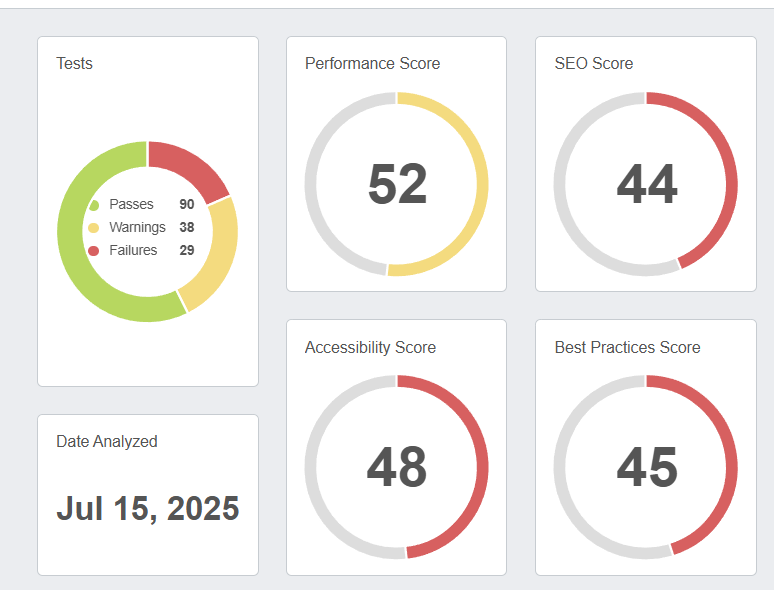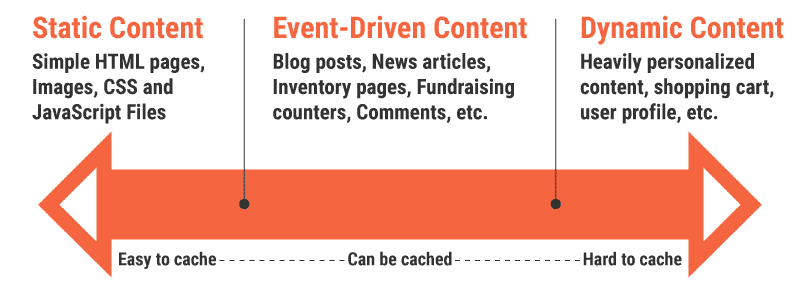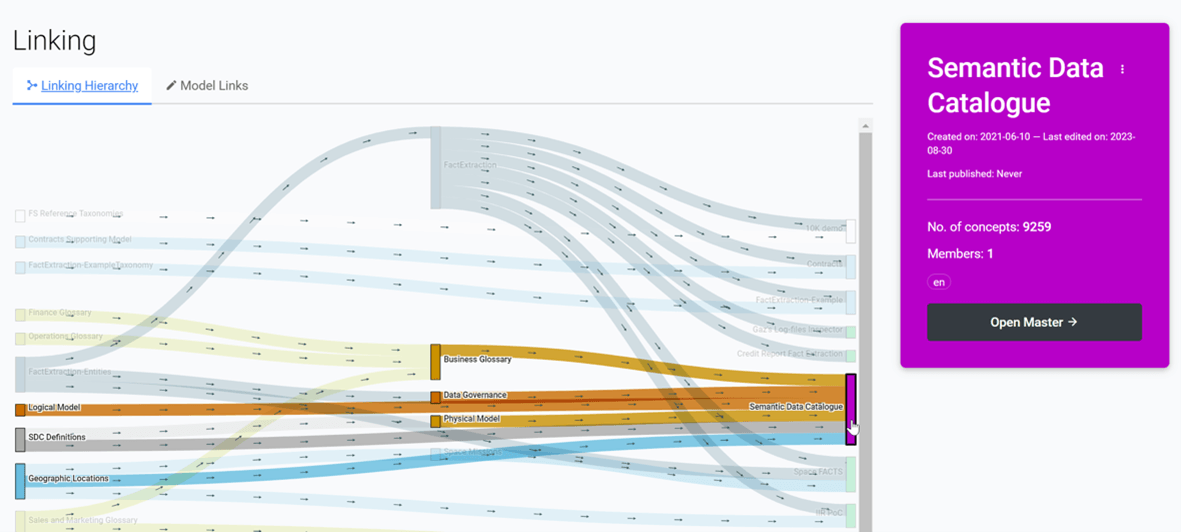Transform Web Content into Clear, Actionable Text
A Complete Guide to Webpage-to-Text Conversion
In my journey through the digital landscape, I've discovered that extracting clean, usable text from complex web pages has become an essential skill. Whether you're feeding content to AI models, conducting SEO analysis, or building research datasets, the ability to convert webpage content to plain text efficiently can transform your workflow.
Understanding the Need for Web-to-Text Conversion
I've witnessed firsthand how the modern web has evolved into a complex tapestry of HTML, CSS, JavaScript, and multimedia elements. While this creates visually stunning experiences, it also presents a significant challenge when we need to extract the actual content buried within these layers of code.

Every day, I encounter users struggling to pull meaningful information from cluttered websites. Navigation menus, advertisements, social media widgets, and cookie notices all compete for attention, making it nearly impossible to focus on the core content. This is where plain text extraction becomes not just useful, but essential.
Key Insight:
The gap between what we see on screen and what we actually need to work with has never been wider. Modern extraction tools bridge this gap by intelligently separating content from presentation.
Whether you're conducting research, feeding content to AI models, or analyzing competitor strategies, the ability to AI convert text to presentation formats starts with having clean, accessible text. I've found that this fundamental step transforms how we interact with web content.
Core Methods and Technologies for Text Extraction
Through my exploration of various extraction methods, I've identified several key approaches that consistently deliver results. Let me walk you through the technological landscape of web-to-text conversion.
Browser-Based Extraction Tools
I've found Chrome extensions like Web.txt particularly powerful for their ability to offer n-gram filtering and batch processing capabilities. These tools can handle documents exceeding 100,000 words, automatically chunking them for AI processing. The beauty lies in their simplicity - with just a click, complex HTML transforms into clean, usable text.
Text Extraction Workflow
Below is how modern extractors process web content:
flowchart TD
A[Web Page URL] --> B[HTML Fetching]
B --> C{JavaScript Rendering?}
C -->|Yes| D[Execute JS]
C -->|No| E[Parse HTML]
D --> E
E --> F[Content Detection]
F --> G[Main Article Extraction]
G --> H[Format Conversion]
H --> I[Plain Text Output]
H --> J[Markdown Output]
style A fill:#FF8000
style I fill:#66BB6A
style J fill:#66BB6A
Online Conversion Services
Services like Multilogin's URL-to-text converter have impressed me with their residential proxy support, allowing extraction even from sites with anti-scraping measures. These tools often provide JavaScript rendering capabilities, essential for modern single-page applications where content loads dynamically.
The technical sophistication has evolved remarkably. From simple HTML parsing to advanced content detection algorithms, today's extractors can intelligently identify and isolate main article text while filtering out navigation, ads, and other peripheral content.
To visualize these extraction workflows more effectively, I recommend using PageOn.ai's AI Blocks feature. It allows you to map out the entire conversion process, making it easier to understand and optimize your extraction strategy.
Practical Applications Across Different Use Cases
Enhancing AI and ChatGPT Workflows
One of my most exciting discoveries has been how text extraction revolutionizes AI workflows. While ChatGPT-4's context window is limited to about 4,096 tokens in conversation, uploading a plain text file enables batch processing of up to 50,000 characters - approximately 10,000 words. For documents exceeding this limit, the AI automatically chunks the content, allowing analysis of webpages containing over 100,000 words.
AI Processing Capacity Comparison
I've successfully used this approach to create clean datasets for training and fine-tuning AI models. The key is structuring AI-ready content properly - something that PageOn.ai's Vibe Creation feature excels at, especially when preparing conversational data.
SEO and Content Marketing Optimization
In my SEO work, I've learned that understanding what search engines actually see is crucial. Text extraction reveals the indexable content stripped of all visual elements, providing invaluable insights into keyword density, content structure, and potential gaps.

I regularly use these tools for competitor content analysis, extracting their articles to understand their content strategy. This approach has helped me identify opportunities and create more comprehensive content audits, especially valuable during site migrations.
Research and Documentation Workflows
For academic and professional research, I've found text extraction indispensable. Converting research papers and articles for offline reading, building text corpora for linguistic analysis, and preserving web content before it changes or disappears have all become streamlined processes.
The ability to integrate extracted research data seamlessly with PageOn.ai's Deep Search capabilities has transformed how I approach comprehensive research projects, allowing for more efficient information synthesis and analysis.
Advanced Features and Customization Options
Through extensive experimentation, I've discovered that the difference between basic and advanced text extraction lies in the customization options available. Let me share the features that have proven most valuable in my work.
Output Format Selection
Plain Text
Best for:
- AI model input
- Word count analysis
- Simple text processing
- Maximum compatibility
Markdown
Best for:
- Preserving structure
- Documentation systems
- Blog content migration
- Maintaining links and formatting
I've learned that choosing between plain text and Markdown depends entirely on your end goal. When working with PPT to HTML converter online tools, Markdown often provides the perfect middle ground between structure and simplicity.
Filtering and Extraction Boundaries
Setting minimum word thresholds has been a game-changer for me. By filtering out blocks with fewer than, say, 50 words, I automatically exclude navigation menus, footer links, and advertisement snippets. The "end of article markers" feature is equally powerful - I can specify phrases like "Related Articles" or "Comments Section" to stop extraction precisely where the main content ends.
Content Filtering Process
flowchart LR
A[Raw HTML] --> B[Text Extraction]
B --> C{Word Count Filter}
C -->|< 50 words| D[Discard Block]
C -->|>= 50 words| E[Keep Block]
E --> F{End Marker Check}
F -->|Found| G[Stop Extraction]
F -->|Not Found| H[Continue]
H --> I[Final Output]
style A fill:#FF8000
style I fill:#66BB6A
Handling Complex and Protected Content
JavaScript rendering has become essential for modern single-page applications. I've encountered countless sites where content loads dynamically through AJAX calls, and without proper JavaScript execution, the extractor would return empty or incomplete results.
Residential proxy usage has proven invaluable when dealing with sites that implement anti-scraping measures. However, I always respect rate limits and ethical boundaries. It's important to note that login-protected and paywall content remain off-limits - these tools work only with publicly accessible information.
Overcoming Common Extraction Challenges
In my journey with web text extraction, I've encountered numerous obstacles. Here's how I've learned to navigate them effectively.
Dealing with Anti-Bot Measures
CAPTCHAs and rate limiting can stop extraction cold. I've found that using residential proxies becomes necessary for sites with aggressive anti-bot measures. The key is maintaining ethical scraping practices - respecting robots.txt files, implementing reasonable delays between requests, and never overwhelming servers.
Pro Tip:
When encountering extraction difficulties, try enabling JavaScript rendering first. If that fails, switch to a residential proxy. Always start with the least invasive method.
Managing Dynamic Content
AJAX-loaded content presents unique challenges. I've learned to identify when content loads dynamically by checking if the page source differs from what's visible in the browser. For these cases, JavaScript rendering is essential, and sometimes adding wait times ensures all content loads before extraction begins.

Format Preservation Considerations
It's crucial to understand what gets lost in conversion. Images, videos, and interactive elements disappear in plain text extraction. While this is often desirable for text analysis, sometimes maintaining semantic structure matters more. I've found that Markdown output strikes the best balance, preserving headings, lists, and links while removing visual clutter.
To transform these complex extraction challenges into clear, manageable workflows, I often use PageOn.ai's Agentic process visualization. It helps map out contingency plans and alternative extraction strategies visually.
Building Efficient Text Extraction Workflows
For Individual Users
I've refined my personal workflow to maximize efficiency. Browser extensions provide one-click extraction, while bookmarklets offer quick access to conversion tools without installation. I organize extracted content in document management systems, always maintaining attribution and source tracking.
My Essential Workflow Steps:
- Install a reliable browser extension (Web.txt or similar)
- Set up extraction presets for common use cases
- Create a folder structure for organized storage
- Implement a naming convention including date and source
- Use tags or metadata for easy retrieval
For mobile document conversion, I've found that cloud-based services work best, allowing seamless access across devices.
For Teams and Organizations
Scaling extraction for teams requires more sophisticated approaches. I've implemented batch processing systems that handle multiple URLs simultaneously, integrated APIs for automated extraction pipelines, and established collaborative workflows for content review and analysis.
Team Workflow Efficiency Metrics
Compliance and data privacy considerations are paramount. I ensure all extracted content respects copyright laws, implement access controls for sensitive information, and maintain audit trails for accountability.
Designing team workflows visually with PageOn.ai's AI Blocks has significantly improved our collaboration. It allows everyone to understand the process flow and identify optimization opportunities.
Future Trends and Emerging Technologies
As I look toward the future of web text extraction, several exciting developments are reshaping the landscape.
AI-Powered Content Understanding
We're moving beyond simple text extraction toward semantic understanding. AI models now comprehend context, identify key concepts, and even summarize content during extraction. This evolution means we can turn text into PowerPoint presentations automatically, with the AI understanding which content deserves emphasis.

Real-Time Translation and Summarization
I'm particularly excited about tools that combine extraction with real-time translation and summarization. Imagine extracting a lengthy German research paper and receiving a concise English summary instantly. This capability is already emerging and will become standard in the near future.
Integration with Knowledge Management Systems
The future lies in seamless integration. Extracted content will flow directly into knowledge bases, automatically tagged, categorized, and cross-referenced. I'm already seeing early implementations where extracted text triggers workflows, updates databases, and generates insights without human intervention.
Looking Ahead:
The evolution toward semantic extraction that preserves meaning, not just text, will revolutionize how we interact with web content. Machine learning models are becoming increasingly sophisticated at understanding context, intent, and relationships within extracted content.
Tools are adapting to increasingly complex web architectures. Progressive Web Apps, WebAssembly, and other emerging technologies present new challenges, but extraction tools are evolving to meet them. The role of machine learning in improving extraction accuracy cannot be overstated - we're seeing error rates drop and accuracy soar as these systems learn from millions of extraction operations.
For those looking to converting PPT to Word doc online, these advances mean better preservation of formatting and structure during the conversion process.
Transform Your Visual Expressions with PageOn.ai
Ready to take your extracted content to the next level? PageOn.ai empowers you to transform plain text into stunning visual presentations, interactive diagrams, and engaging content that captures attention and communicates clearly. Our AI-powered tools make it easy to create professional visualizations from any text source.
Start Creating with PageOn.ai TodayYour Journey to Mastery Begins Now
Through this comprehensive exploration, I've shared the tools, techniques, and insights that have transformed my approach to web content extraction. From simple browser extensions to sophisticated AI-powered solutions, the ability to convert webpage content to clean, actionable text has never been more accessible or powerful.
Whether you're enhancing AI workflows, optimizing SEO strategies, or building research databases, the principles and practices I've outlined provide a solid foundation for success. Remember, the goal isn't just to extract text - it's to unlock the value hidden within web content and transform it into actionable insights.
As we stand on the brink of even more exciting developments in semantic extraction and AI-powered content understanding, I encourage you to experiment with these tools and techniques. Start with simple extractions, gradually explore advanced features, and don't forget to leverage visual tools like PageOn.ai to transform your extracted content into compelling visual narratives that truly resonate with your audience.
You Might Also Like
Mastering Google Slides Transitions and Animations: The Complete Motion Panel Guide
Learn how to create smooth transitions and animations in Google Slides using the Motion panel. Master slide transitions, object animations, and advanced techniques for impactful presentations.
Creating Immersive Worlds: The Art of Color and Atmosphere in Visual Storytelling
Discover how to build magical worlds using color psychology and atmospheric elements. Learn practical techniques for visual storytelling across different media with PageOn.ai's innovative tools.
Building Powerful Real-World AI Applications with PostgreSQL and Claude | PageOn.ai
Learn how to build sophisticated AI applications by integrating PostgreSQL and Claude AI. Discover architecture patterns, implementation techniques, and optimization strategies for production use.
Creating Dynamic Picture Backgrounds in PowerPoint: Transform Your Presentations
Learn how to create stunning dynamic picture backgrounds in PowerPoint presentations to boost engagement, improve retention, and enhance visual appeal with step-by-step techniques.